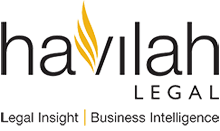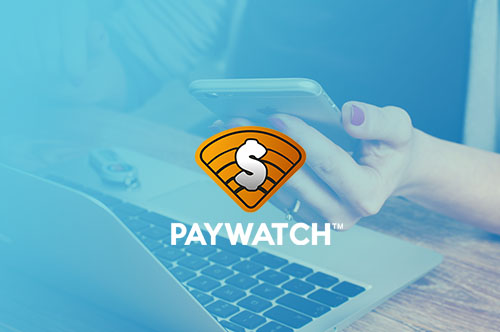While most business owners agree that chasing overdue accounts through the courts is the small business owner’s worst nightmare, few realise the importance of concentrating on cash-flow.
Businesses go broke for lack of cash-flow. It’s that simple.
When a business makes critical decisions about anticipated projects, hiring further staff, preparing realistic budgets and planning for potential threats (like the loss of a large client potentially leaving a business bereft of income), the numbers that the bank, your accountant and any other stakeholder want to know about is the cash budget of what is coming in and going out.
Just try extending your overdraft in a crisis or alternately try asking the bank, usually at the last minute, to make up a shortfall in your available funds to meet payroll. They will want to see a cash forecast to be confident you are able to meet your short term liability.
Perhaps the excuse for not managing the outstanding invoices is that debt recovery means taking time away from the business and potentially having to pay significant legal fees. Or that the cost of chasing the debt doesn’t guarantee the money will be recovered making the fix worse than the debt.
Whilst these are both very valid concerns the truth is that if you run a small business, it’s essential to understand how the legal process works and the likely costs involved in debt recovery. This will ensure you are in a good position to accurately conduct a cost vs benefits analysis to ascertain what debts to chase and when to write a debt off.
The entire debt recovery process begins well before a recovery claim is brought to court.
Reminder Process
The first step is to have a reminder process in place. There is simply no need to escalate your recovery process until you have sorted out which of your debts need a letter of demand. To begin with have a time at the end of your trading terms to call your debtors and remind them your invoice is overdue. It is also recommended that you have your customer terms of payment reviewed to ensure they are legally enforceable in the first instance.
Escalation and Issuing a Summons
Escalating is only the second step. It is certainly better if the letter of demand comes from a solicitor so the debtor knows you are serious about recovering the debt. If the debtor then fails to pay on receiving the letter of demand then a summons can be issued in the appropriate court.
Each Court has its jurisdiction so if the debt is less than a certain amount in each jurisdiction, then the matter is first heard in the local court. If it exceeds the jurisdictional limit then the matter goes to the District Court or even the Supreme Court.
While different Court rules mean that the debt collection process varies slightly from state to state, it is essentially the same across the country.
Statement of Claim
Once you lodge a summons you must particularise the matter in a court document called a Statement of Claim. This will outline the grounds of the case, for example, when the contract was entered into, when the outstanding invoices were issued and what the total debt is.
The documents have to be lodged with the court although this can be done by mail, in person or even lodged online. Once the claim has been received and stamped by the Court it needs to be served on the debtor.
Service on the Debtor
Service on the debtor is prescribed by Court rules and may involve a process server which is an additional cost. Once served, the Debtor will have a period of time to either respond or choose to ignore the matter. The debtor’s options are to pay in full, come to some other arrangement acceptable to the creditor or to file a legal defence disputing some or all of the debt. If the debtor doesn’t react at all after receiving the Court documents then a default judgment can be obtained by lodging another form with the Court.
Default Judgement
What happens in the case of a default judgment is that the matter will go to court to be heard without the defendant being present.
This can be the end of the disputed process and it isn’t very expensive to get to this point. Many debts are not disputed and the outcome is that the creditor has a judgment to enforce for a very limited cost.
Cost vs Benefit Analysis
The last thing a creditor wants to do is throw good money after bad so it is important to make a sound commercial decision about whether to lodge a claim in Court or whether to pursue that claim if the debtor disputes the debt. Court records show that 98 per cent of finalised civil consumer debt matters are through obtaining a default judgment.
Certainly in the majority of cases the debtor just continues to ignore the process. Unfortunately, just because a court issues a judgement it does not guarantee the debt will be paid.
Recovering the Dollars by Executing on a Judgement
It can often be difficult to enforce the judgement. If the defendant has admitted liability when the summons is served and offers to pay the outstanding debt, there will still be an agreement to pay either the whole or some of the debt.
We often advise clients to accept a smaller amount than the original debt, rather than having to incur the cost of pursuing the full amount. If a creditor is owed $100 and an offer is made for $80 it becomes a cost and benefit analysis to decide whether to chase the full amount which will cost more in terms of time and money.
Remember that in most cases that if the defendant fails to defend a claim, then the creditor can receive legal recognition of the debt after a short time from the date of service of the statement of claim.
Debtor Refuses to Pay
If the debtor refuses to pay, the creditor has a number of options on how to go about recovering the money. These include an examination summons or alternately a writ of execution against goods or land.
Another less used option is a garnishees or attachment order which is where the debtor is ordered to pay a proportion of the debt to the creditor in instalments. The garnishee order is usually served on an employer who owes the debtor wages or even on a bank who holds money in credit for the debtor.
A debtor can object to the Court making a garnishee order if it results in him or his family being impoverished and this is why a garnishee order needs to be renewed periodically.
If all other measures fail, then the creditor can pursue bankruptcy against an individual or liquidation of a company.
Conclusion
Chasing debts through the full court process can be a drawn out and costly process so it is worth using the services of lawyers experienced in this field.
Havilah Legal’s debt recovery team are highly experienced in this area. Please contact Jan Eastman of Havilah Legal with any queries.

